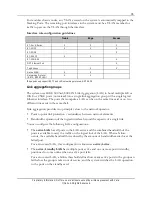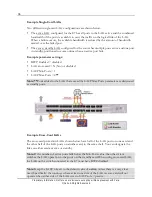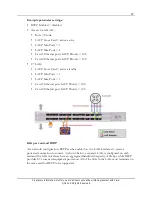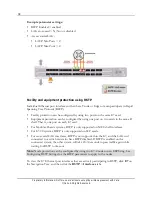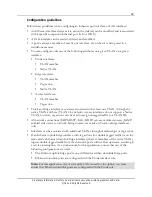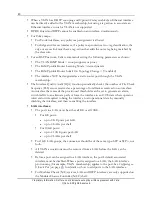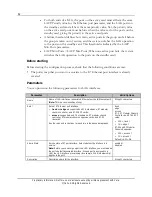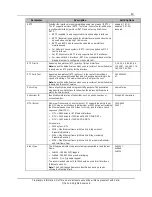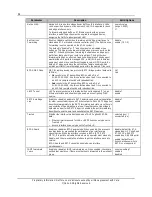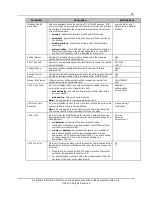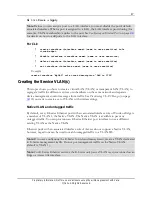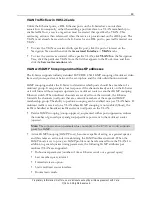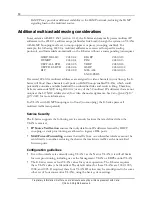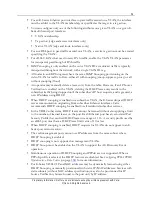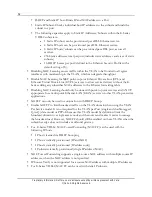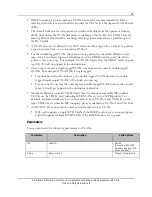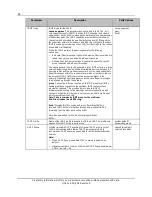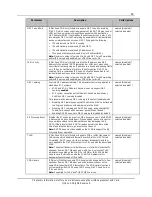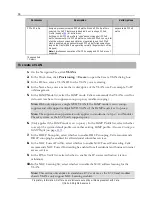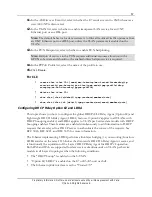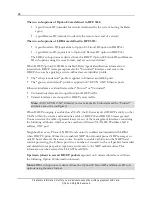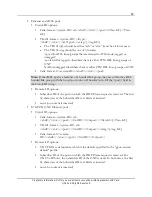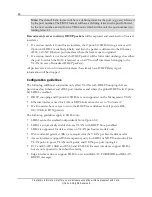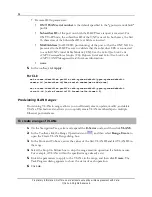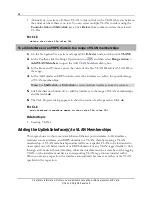
49
Proprietary Information: Not for use or disclosure except by written agreement with Calix.
© Calix. All Rights Reserved.
VLAN Traffic flow in VDSL2 Cards
Unlike the Ethernet ports, xDSL Ethernet ports on the E-Serieshave no interface
association. Consequently, rather than adding a port interface to a VLAN membership to
enable traffic flow, a service-tag action must be created that specifies the VLAN. This
service-tag action is then referenced when the service is provisioned on the xDSL port. The
VLAN must already be created on the E-Series for an xDSL port to pass traffic carried on a
VLAN.
To view the VLANs associated with specific port, click the port of interest on the
Navigation Tree, and then click the
Associated Interface
>
VLANs
tabs.
To view the services associated with a specific VLAN, click
VLANS
on the Navigation
Tree, click the particular VLAN from the list that appears in the Work Area, and then
click the
Service Associations
tab.
VLAN with IGMP Snooping and multicast IP addresses
The E-Series supports industry standard IETF RFC 4541 IGMP snooping of multicast video
leave and join requests sent between the set-top box and the video distribution network.
IGMP snooping enables the E-Series to determine which ports should be a member of a
multicast group. It can provide a local response if the channel already exists on the E-Series
or it will forward those requests upstream to a multicast router or another IGMP snooping
Ethernet switch. When multicast channels are received from the network, the E-Series
forwards the channels to all ports that are currently members of the requested IGMP
membership group. The ability to perform snooping can be enabled on a per VLAN basis. If
multicast traffic is received on a VLAN where IGMP snooping is not enabled (flood), the
traffic is handled as broadcast traffic and sent to all ports on the VLAN.
Passive IGMP snooping (snoop-suppress), augmented with report suppression reduces
the number of general query and group specific reports sent to the multicast router
(querier).
Note:
The suppress-snoop parameter does not apply to the E7-20, as it only supports
proxy for IGMP.
Active IGMP Snooping (IGMP Proxy), becomes capable of acting as a general querier
and thus takes an active role in maintaining the IGMP multicast network. When the
IGMP mode is set to proxy, an IGMP profile must be referenced from the VLAN. In
addition to general querier timing parameters, the following IGMP attributes per
multicast VLAN are supported:
Robustness parameter (number of times E-Series sends out a general query)
Last member query interval
Immediate leave option
Static multicast router interface
Router learn mode

